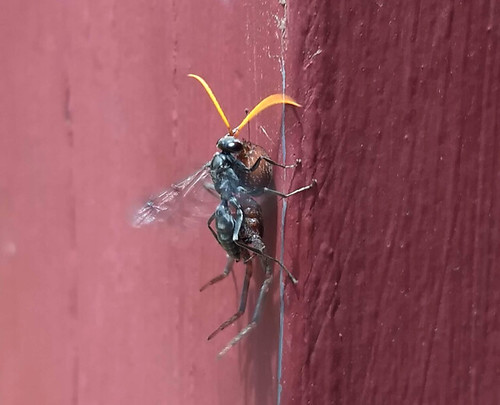In the bush nearby you can often see sections of sandstone that have clusters of regular sized holes around 10mm in diameter. Sometimes these pieces of sandstone are on a walking track where they get worn down to show the internal paths these holes take. I have a distant hazy memory of being told the holes are made by native bees. A bit of the old web searching brought up some more information!


The holes in sandstone are apparently the burrows of a native bee called the Blue Banded Bee. Blue Banded bees are found all over Australia except Tasmania and the Northern Territory. They are solitary bees that build their nests in mud and soft sandstone, they are also known to burrow into the mortar of old buildings.
I’ve not seen one of these bees myself so I don’t have a picture. They are described as being 8mm – 13mm long with a furry red brown thorax and blue and black stripes on it’s abdomen. They live around 40 days, baby bees remain in their eggs over winter but several generations can hatch over the warmer months. They are meant to be common, I’ll be keeping an eye out to try and get a picture.
[update] – Found some!





